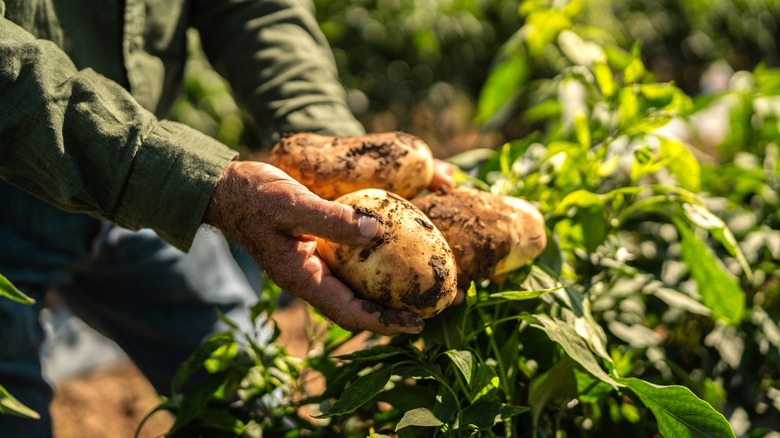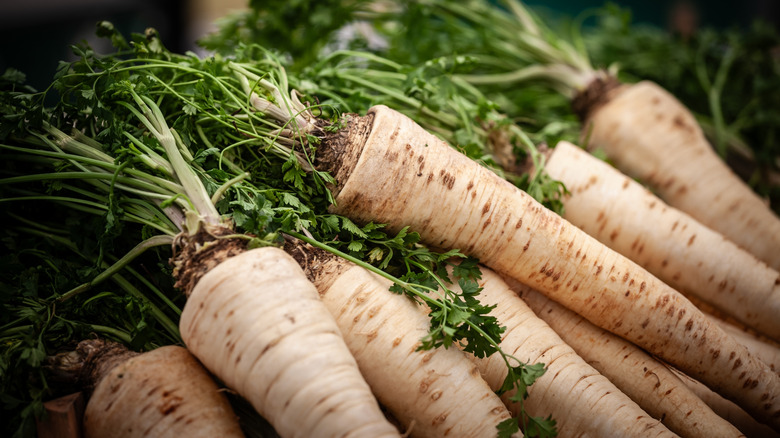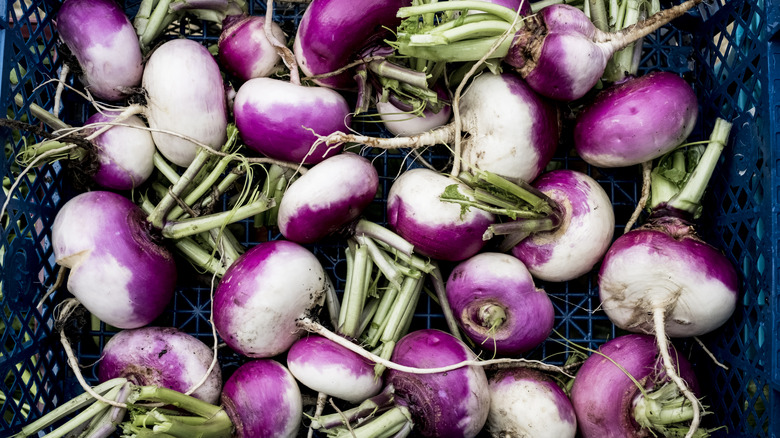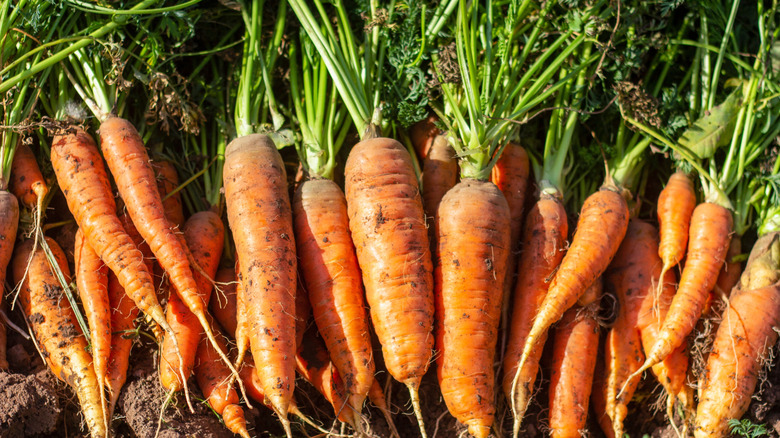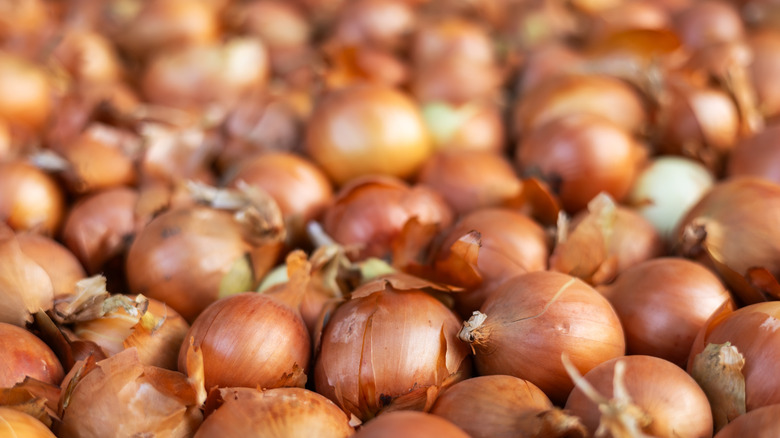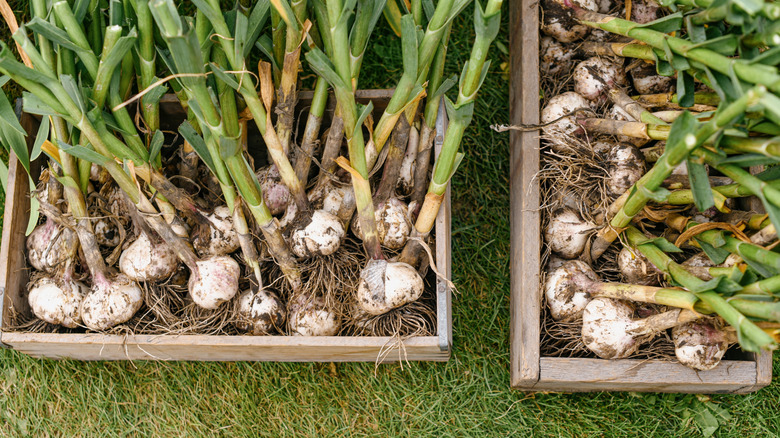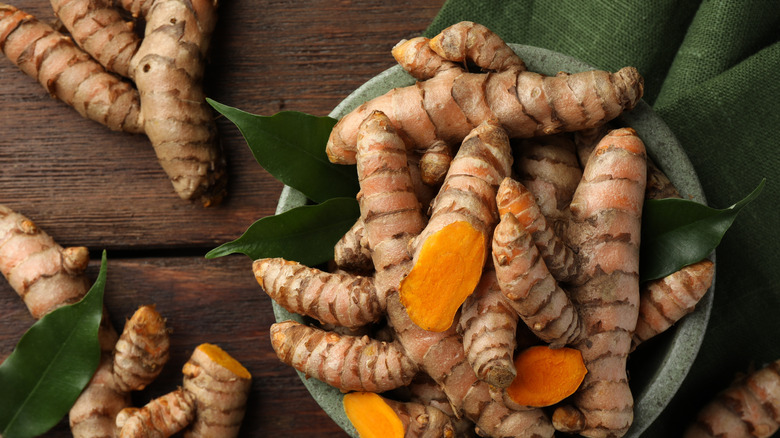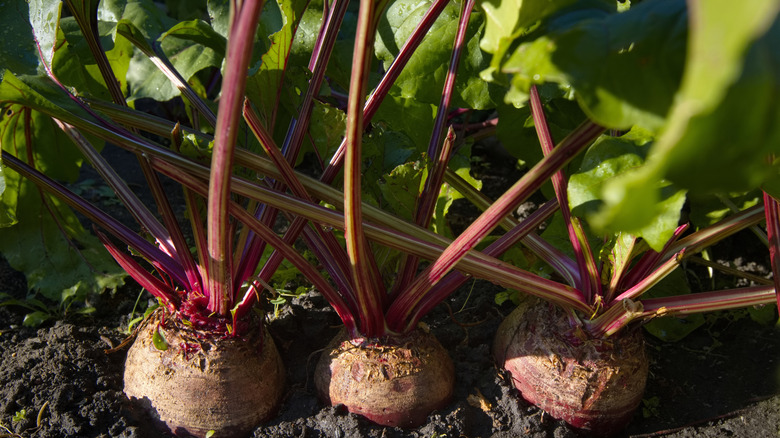8 Popular Root Vegetables & When They're In Season
Root vegetables grow year-round and offer some of the hardiest and tastiest produce around. What's more, they're a lot more diversified than people think. There's more to carrots than meets the eye, and beetroots can come in a variety of shapes and colors, not only the jewel tones we tend to see. Root veggies require pretty minimal upkeep between planting and harvesting, and many of them grow over the winter for sweeter produce since all that frost forces the plant to convert its starches into sugars to protect itself from the cold.
Some root vegetables can be harvested early, which will result in smaller produce, but these are slightly sweeter than their fully matured form, allowing gardeners to make the most of their harvest season and get the widest variety from one plant. While many roots can be grown from seeds, it's important to note that some are best taken from parts of an existing plant and planted that way. Pay attention to your vegetables' ideal growing requirements, and reap the tasty rewards all year long.
Potatoes are hearty choices in summer and fall
While not technically a root vegetable (they're tubers), these family-favorites are planted in the spring and harvested anywhere between midsummer and late fall. The earlier they are harvested, the smaller they'll be and with thinner skin — and these should be consumed fairly soon after. If you take them out in the autumn (the main harvesting season), you'll get larger spuds with thicker skin, which store well, so you can keep them on hand for up to three months in a cool, dry place without too much light.
Parsnips add subtle sweetness from fall to spring
These flavorful root vegetables can be harvested from the fall all the way into early spring. If you lift them after the last frost, they will have a sweeter taste than earlier crops. They can be a bit particular in germinating, preferring warmer soil, but the best course of action is to sow a lot of seeds. Once they have matured, they offer good yield with minimal maintenance needed until harvesting.
Turnips are best from summer through fall
These tasty roots are fast workers, germinating in just a few days and ready to harvest two months later. They thrive in cooler conditions and are generally harvested towards the end of June all the way into October, but they can be left in the ground later than this, and the frost will actually accentuate their flavor in doing so. Their speed and long growing window allow for multiple crops within one season.
Carrots get sweeter through summer and fall
Carrots are a popular choice for beginner gardeners because they grow easily from seeds, and can be planted either in a soil patch or in planters. They take the same time to reach maturity as turnips — between two to two and a half months, but they can be harvested in stages, with the younger ones having a sweeter taste. They are best planted in the early spring or late summer so that they can establish themselves in cooler conditions, and are ready to harvest between summer and fall.
Onions brighten meals throughout the year
Onions are pungent bulbs that are delicious when cooked flawlessly, so it's a good thing they're so easy to grow. They are typically transplanted in sets as opposed to straight from seeds, but either way, they need to be in the ground in early spring. These varieties will sprout by mid-summer. In cooler climates, they can be planted in late fall and harvested in early spring.
Garlic takes a while but is ready to harvest in summer
Perhaps not typically what we think of as a root vegetable, but garlic does, in fact, fall into this category. Their main harvest season is summer, needing to be planted all the way back in the fall for best results. Garlic needs the frosty winter to split the cloves; otherwise, the crop will yield bulbs akin to onions. You can still eat these — they're just a bit milder than cloves.
Turmeric is best harvested in autumn and winter
People are primarily familiar with this food in powder form, but you can actually grow turmeric right in your backyard. Again, these aren't technically root vegetables, but they're close enough. Plant these rhizomes (the underground stems) into the ground in the late winter or early spring. Turmeric needs warm conditions to thrive, and it'll be ready to harvest in the late summer or the beginning of fall. From there, you can eat it in various forms.
Beetroots are perfectly sweet come summer
The bright, beautiful roots are planted in the spring through summer to soak up all the mild sunlight, ready to harvest in the early summer through autumn. They can also be planted towards the end of summer for a fall harvest. They are easy to grow in both containers and the ground, and are relatively easy going – until they're ready to harvest and enjoy.


